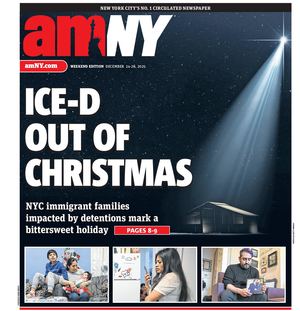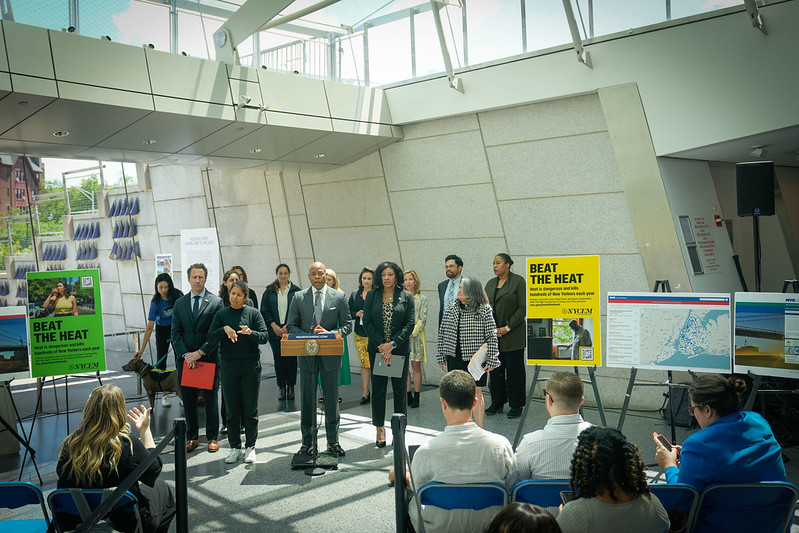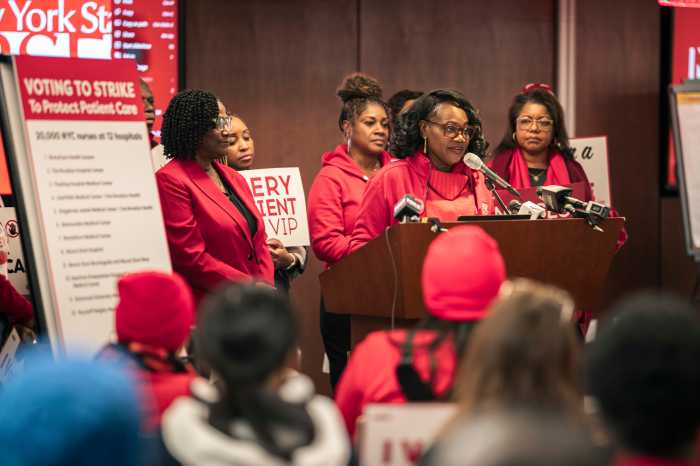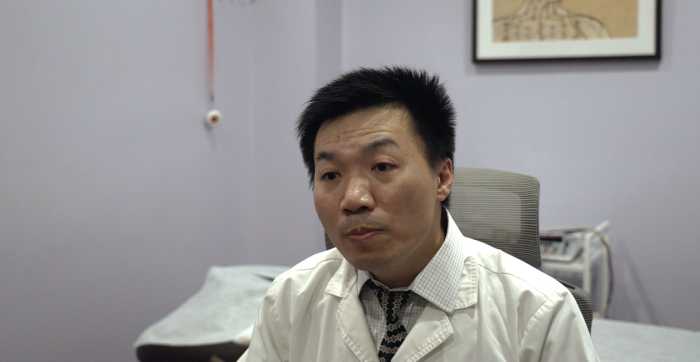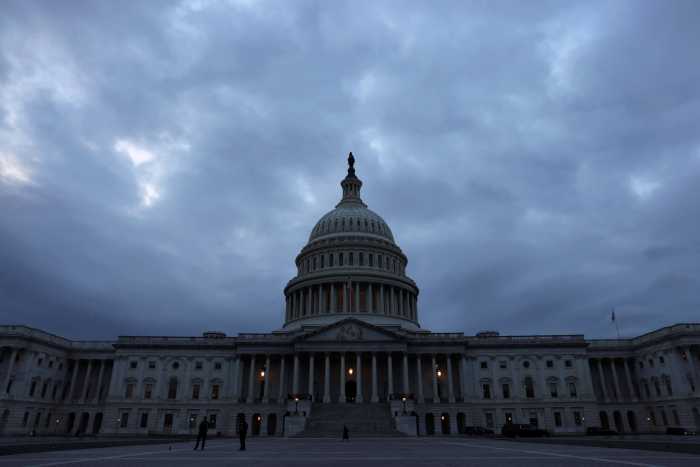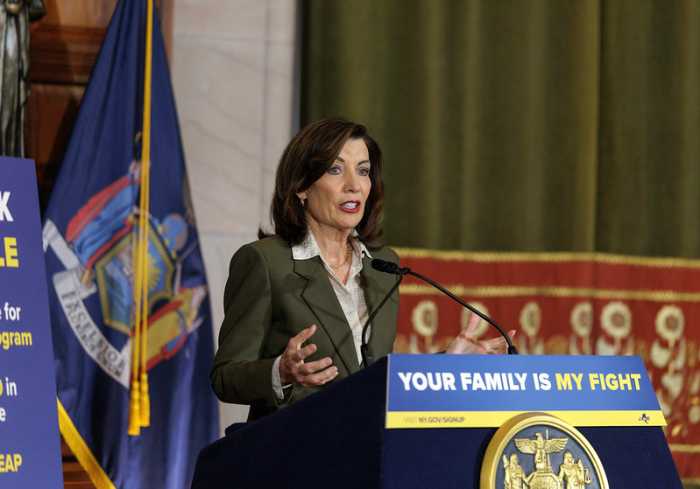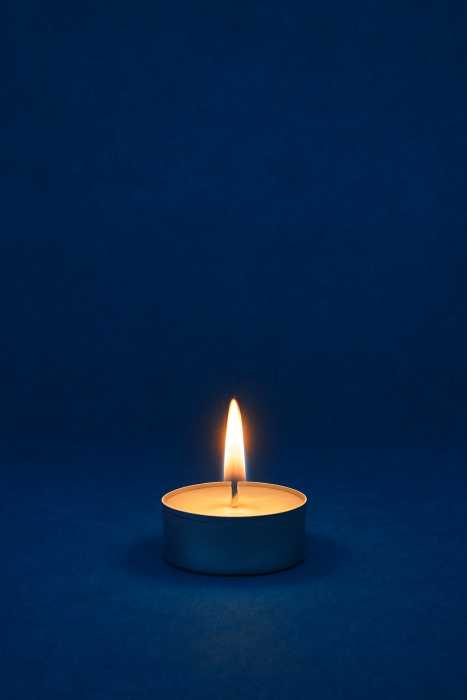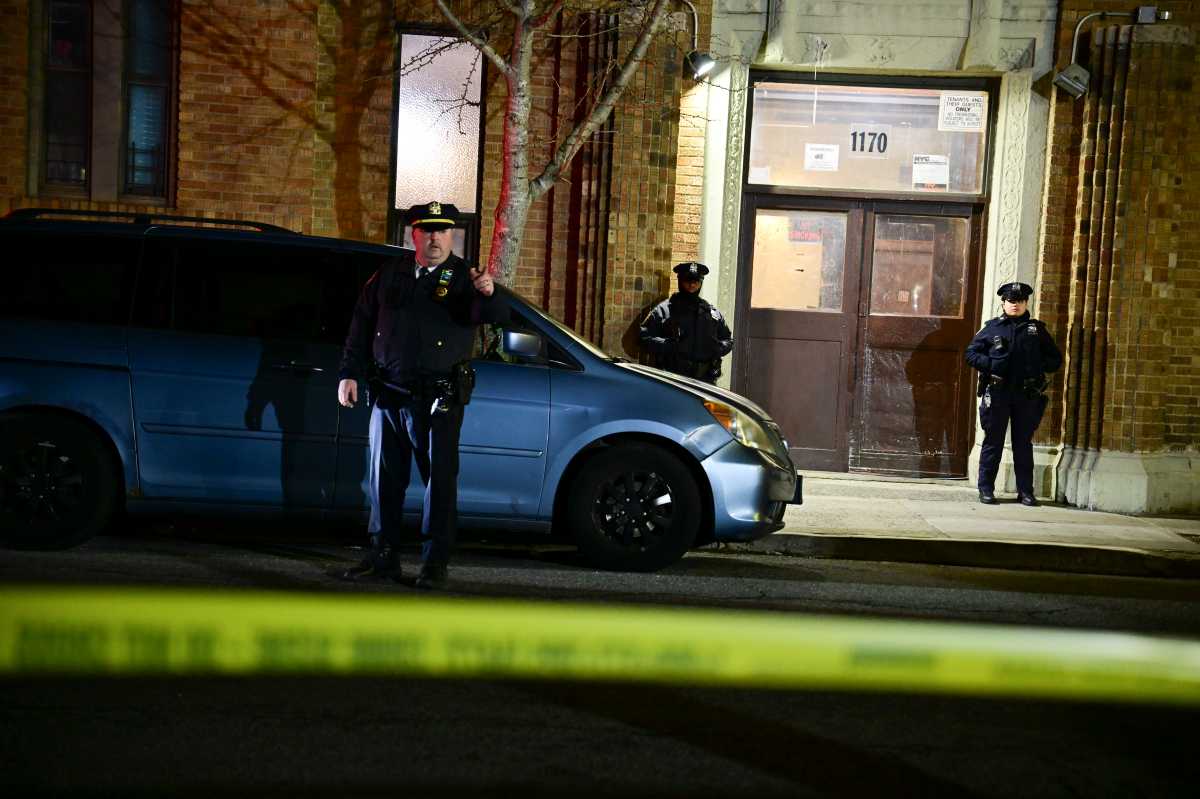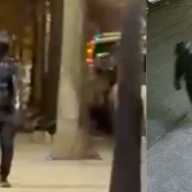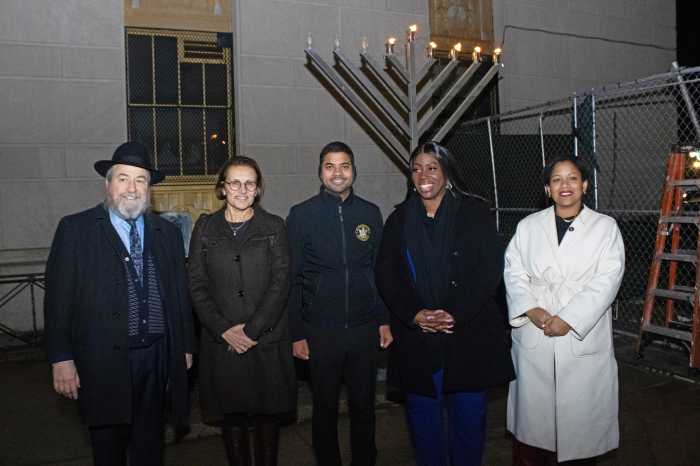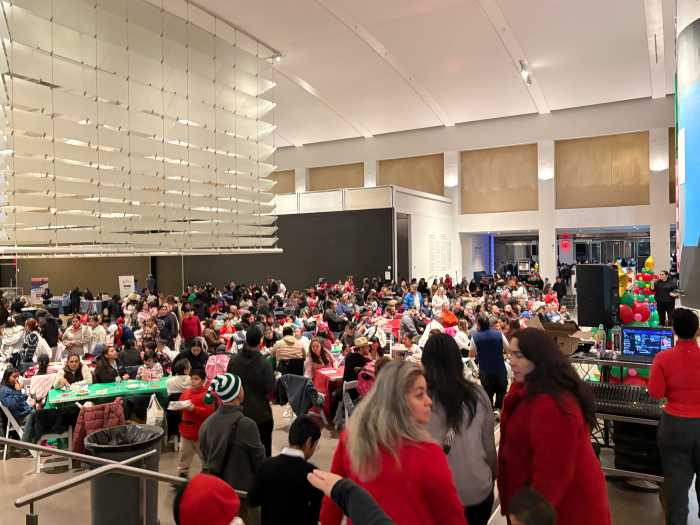With summer right around the corner, Mayor Eric Adams announced Thursday new preparations that aim to keep New Yorkers safe from and informed about intense heat, poor air quality and other extreme weather that may befall the city this season.
Adams, during a May 30 morning news conference at the Brooklyn Museum, said vulnerable populations — especially seniors and those with respiratory conditions — should be prepared for heat waves and extreme weather that can come with the summer months.
“We all may love a nice hot summer day, but it comes with some warning signs that we all should be prepared [for],” Adams said. “And our summers are different now, global warming is real and we want to make sure that climate change and the heat that it brings with intensity, that people are aware of how to deal with it during the heatwave.”
To prepare for extreme heat events, when temperatures often rise at least 10 degrees above the average, the city has launched an online guide called “Beat the Heat” with guidance on how to ride out boiling summer days.
Additionally, the city has expanded the number of cooking centers that will be operating this summer — including elected officials’ offices and museums — and rolled out a revamped interactive map that indicates which ones are open in real-time.
There will be roughly 620 cooling centers online this summer, according to New York City Emergency Management spokesperson Aries Dela Cruz, which is 13 more than were in operation last year. The centers will be open mostly during business hours, but times will vary between each location, he added.
The city is also rolling out a pilot program to give “cool kits” to delivery drivers, those who work outdoors and others who are at risk during extreme heat events, according to Emergency Management Commissioner Zach Iscol. The kits contain items such as sunscreen, cooling towels and electrolyte drink mix.
Responding to wildfire smoke
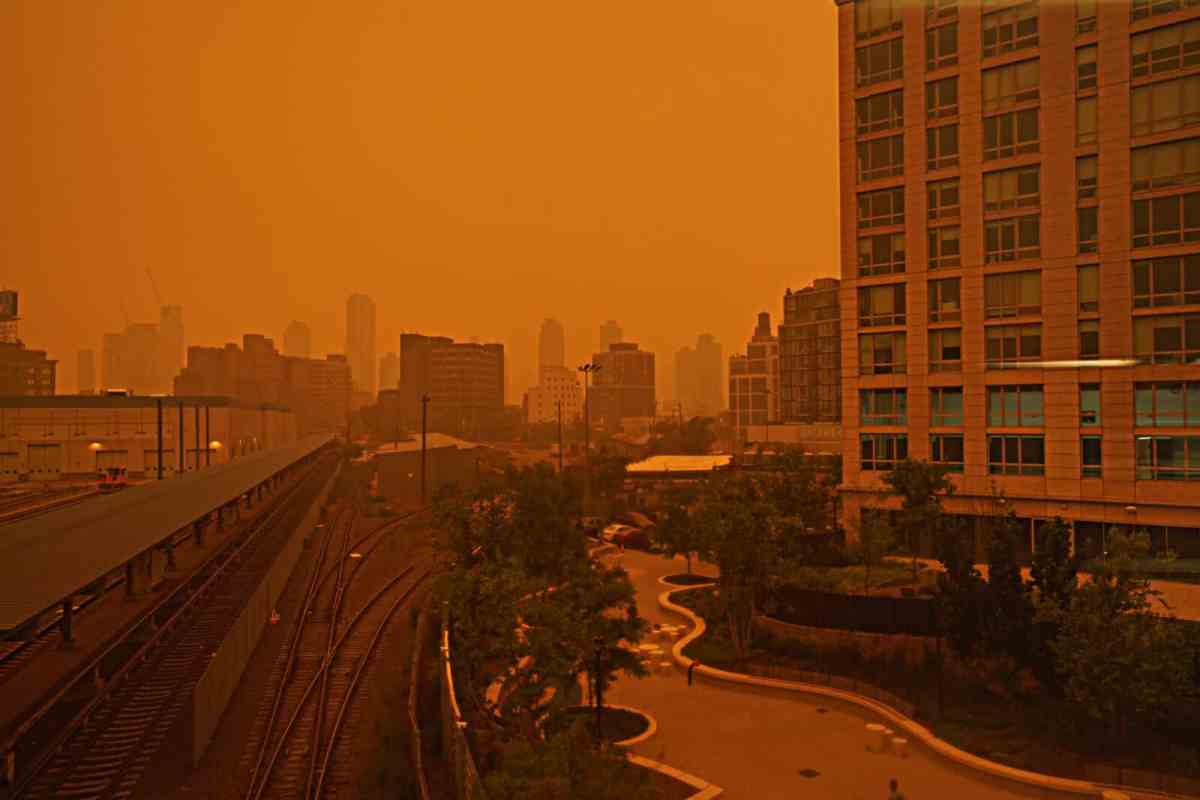
Iscol also said the administration has developed new protocols for responding to poor air quality events, such as the one caused by Canadian wildfires that blanketed the city last summer with smog and an orange haze.
City Hall was widely criticized for its response to that incident, with many lawmakers accusing it of being too slow to inform the public about the potential dangers of breathing the toxic air.
“Since wildfire smoke blanketed the city last year, we’ve been working on internal protocols to improve our response to wildfire incidents,” Iscol said.
The new internal guidance contains instructions around how various city agencies — including Emergency Management and the Department of Health — should notify the public about air quality emergencies and how best to prepare, according to Dela Cruz. The guidance goes over issuing travel advisories, advising workplaces and schools to shift to remote work and instruction and monitoring emergency room admissions.
The new guidance is needed, Iscol said, since this summer is shaping up to be another active Canadian wildfire season.
“It is something that we are looking at and preparing for,” he said. “It looks like there are a lot of very dry areas of Canada right now that can lead to increased amounts of smoke when you have these types of wildfires.”
